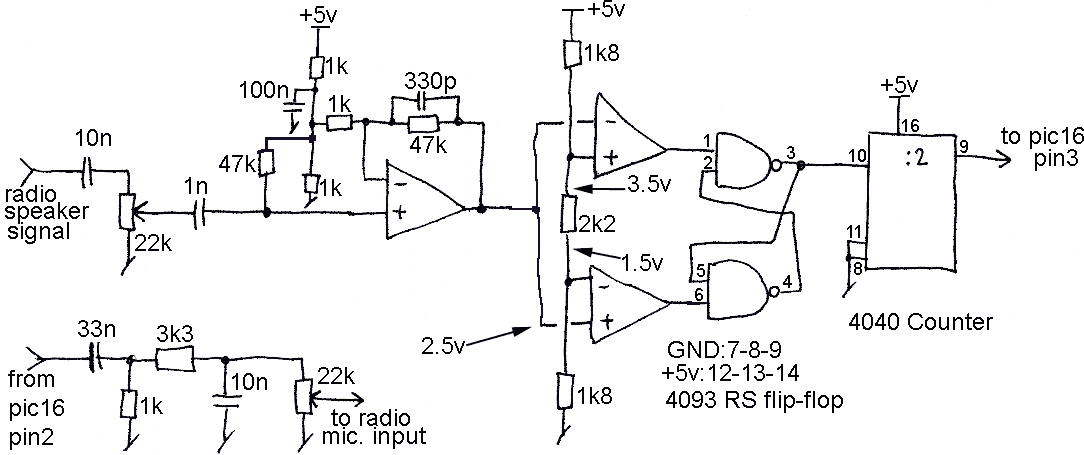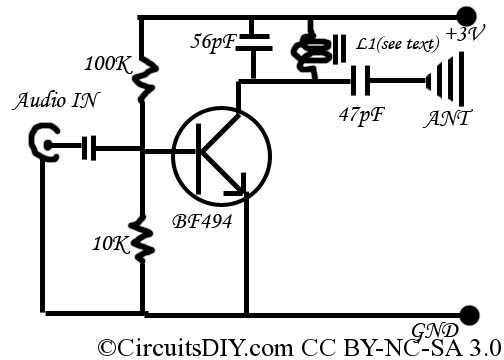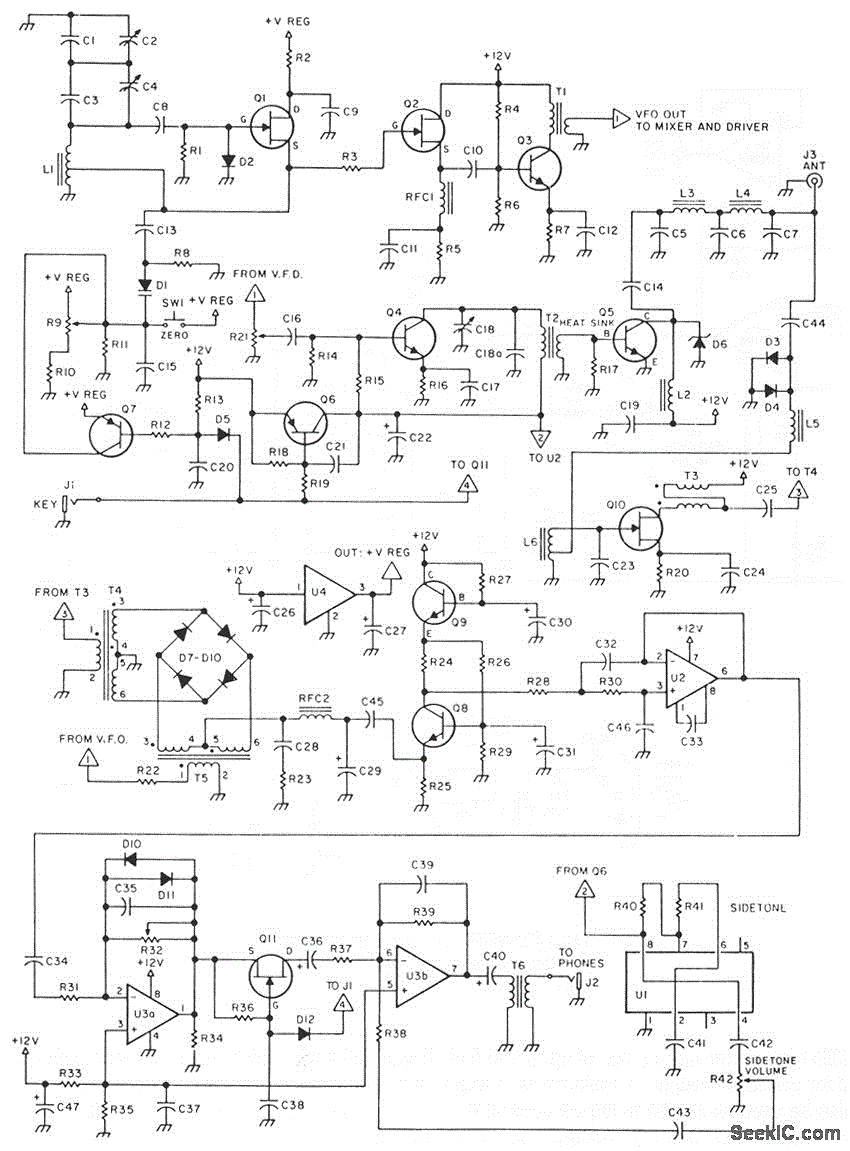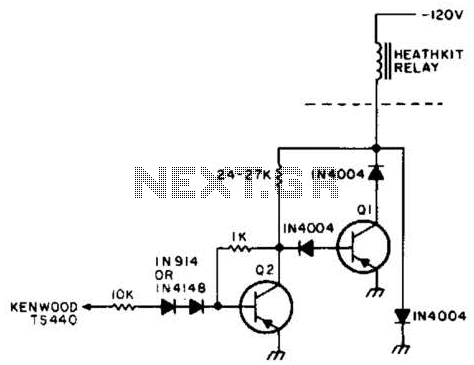
7MHz CW transceiver made with Motrola MC3362P

The 7MHz CW transceiver is constructed using the MC3362P integrated circuit, originally intended for a 10MHz band transceiver. Due to concerns regarding unexpected neighboring spurious signals, the frequency was altered to 7MHz, leading to the completion of the transceiver. This CW transceiver utilizing the MC3362P was featured in the QST journal in December 1990 and January 1991, with selected passages translated and published in the August 1991 issue of the JA-CQ journal. The IC includes two sets of double balanced mixers and local oscillators, making it suitable for single super heterodyne receivers for SSB (Single Sideband) and CW (Continuous Wave) communications. The overall circuit design is compact, utilizing the first mixer of the receiving circuit as the transmission mixer. The transceiver employs two transistors for the transmitting output stage, one FET for reception AGC (Automatic Gain Control), an NJM386 (a variant of the LM386), and four additional transistors for the transmitting-receiving switch, aside from the MC3362P. Unfortunately, production of the MC3362P ceased at the end of 1998, with Motorola recommending the MC13135 as a substitute. The transceiver is housed in a 'P-7' case from the Mizuho company. The front panel features a power switch, a stereo headphone jack, a key jack, a VFO (Variable Frequency Oscillator) knob, RF gain, and AF gain controls, while the rear panel includes a DC power supply connector (6-9V) and an M-type antenna connector.
The 7MHz CW transceiver based on the MC3362P is a compact and efficient design tailored for amateur radio enthusiasts. The MC3362P integrated circuit serves as the core component, integrating essential functionalities such as double balanced mixers and local oscillators, which are pivotal for effective signal processing in both receiving and transmitting modes. The choice of 7MHz as the operating frequency allows for clearer communication, particularly in the presence of spurious signals that can affect performance in higher frequency ranges.
The circuit architecture employs a single super heterodyne configuration, which is advantageous for SSB and CW operations due to its ability to provide high selectivity and sensitivity. The use of the first mixer in the receiving circuit as the transmission mixer is a clever design choice that minimizes component count and saves space, contributing to the overall compactness of the device.
The inclusion of only two transistors in the transmitting output stage simplifies the design while maintaining adequate power output for effective transmission. The NJM386 operational amplifier enhances the AGC functionality, ensuring that the receiver can adapt to varying signal strengths, which is crucial for maintaining audio clarity and preventing distortion.
The transceiver's user interface, as depicted in the upper front panel photograph, is designed for ease of use. The arrangement of controls allows for intuitive operation, with the VFO knob enabling precise frequency adjustments. The RF and AF gain controls provide users with the ability to optimize signal levels for both transmission and reception.
The rear panel's DC power supply connector and M-type antenna connector are standard features in amateur radio equipment, facilitating easy integration with existing setups. The housing in the 'P-7' case not only protects the internal components but also provides a professional appearance, making it suitable for both personal use and public demonstrations.
As the MC3362P is no longer in production, users may need to consider the MC13135 as a viable alternative for future repairs or modifications. Overall, this transceiver represents a significant achievement in compact radio design, combining functionality with user-friendly features for effective amateur radio communication.The 7MHz CW transceiver made with MC3362P. I made a 7MHz CW transceiver by using the IC for the narrow band FM double super receiving circuit, MC3362P. I intended to make a transceiver for 10MHz band in the beginning. But, I was worried by the neighboring spurious signal which wasn`t expected, and I changed the plan. I changed frequency to 7MHz ba nd, and continued the production, and completed this transceiver. The CW transceiver made by MC3362P was introduced to the QST journal of December, `90 and January, `91 as well. (The article of the translation of selected passages appeared in August, 91 issue of the JA-CQ journal as well.
) Because 2 set of double balanced mixers and local oscilators are built in this IC, it is suitable for the single super heterodyne receiver of SSB/CW. I made the whole circuit scale compact by using the 1st mixer of the receiving circuit as the mixer for the transmission as well.
I am only using 2 transistors of the transmitting output stage, 1 FET of the reception AGC, NJM386(second source of LM386) and 4 transistors such as the transmitting-receiving switch, except for MC3362P. But, though it is very much disappointed, it seems to finish the production of MC3362P by the end in 1998.
(The Motrola company recommends MC13135 as the substitut. ) I included this transceiver into the case of `P-7` which was kit of the Mizuho company. As for being reflected by the photograph of the upper front panel, a slide switch under that is a power switch with a stereophonic headphones jack, a key jack, a VFO knob, RF gain, AF gain from the left. It is the power supply connector of DC6 - 9V and a M-type antenna connector that it is reflected by the photograph of the rear panel.
🔗 External reference
The 7MHz CW transceiver based on the MC3362P is a compact and efficient design tailored for amateur radio enthusiasts. The MC3362P integrated circuit serves as the core component, integrating essential functionalities such as double balanced mixers and local oscillators, which are pivotal for effective signal processing in both receiving and transmitting modes. The choice of 7MHz as the operating frequency allows for clearer communication, particularly in the presence of spurious signals that can affect performance in higher frequency ranges.
The circuit architecture employs a single super heterodyne configuration, which is advantageous for SSB and CW operations due to its ability to provide high selectivity and sensitivity. The use of the first mixer in the receiving circuit as the transmission mixer is a clever design choice that minimizes component count and saves space, contributing to the overall compactness of the device.
The inclusion of only two transistors in the transmitting output stage simplifies the design while maintaining adequate power output for effective transmission. The NJM386 operational amplifier enhances the AGC functionality, ensuring that the receiver can adapt to varying signal strengths, which is crucial for maintaining audio clarity and preventing distortion.
The transceiver's user interface, as depicted in the upper front panel photograph, is designed for ease of use. The arrangement of controls allows for intuitive operation, with the VFO knob enabling precise frequency adjustments. The RF and AF gain controls provide users with the ability to optimize signal levels for both transmission and reception.
The rear panel's DC power supply connector and M-type antenna connector are standard features in amateur radio equipment, facilitating easy integration with existing setups. The housing in the 'P-7' case not only protects the internal components but also provides a professional appearance, making it suitable for both personal use and public demonstrations.
As the MC3362P is no longer in production, users may need to consider the MC13135 as a viable alternative for future repairs or modifications. Overall, this transceiver represents a significant achievement in compact radio design, combining functionality with user-friendly features for effective amateur radio communication.The 7MHz CW transceiver made with MC3362P. I made a 7MHz CW transceiver by using the IC for the narrow band FM double super receiving circuit, MC3362P. I intended to make a transceiver for 10MHz band in the beginning. But, I was worried by the neighboring spurious signal which wasn`t expected, and I changed the plan. I changed frequency to 7MHz ba nd, and continued the production, and completed this transceiver. The CW transceiver made by MC3362P was introduced to the QST journal of December, `90 and January, `91 as well. (The article of the translation of selected passages appeared in August, 91 issue of the JA-CQ journal as well.
) Because 2 set of double balanced mixers and local oscilators are built in this IC, it is suitable for the single super heterodyne receiver of SSB/CW. I made the whole circuit scale compact by using the 1st mixer of the receiving circuit as the mixer for the transmission as well.
I am only using 2 transistors of the transmitting output stage, 1 FET of the reception AGC, NJM386(second source of LM386) and 4 transistors such as the transmitting-receiving switch, except for MC3362P. But, though it is very much disappointed, it seems to finish the production of MC3362P by the end in 1998.
(The Motrola company recommends MC13135 as the substitut. ) I included this transceiver into the case of `P-7` which was kit of the Mizuho company. As for being reflected by the photograph of the upper front panel, a slide switch under that is a power switch with a stereophonic headphones jack, a key jack, a VFO knob, RF gain, AF gain from the left. It is the power supply connector of DC6 - 9V and a M-type antenna connector that it is reflected by the photograph of the rear panel.
🔗 External reference





